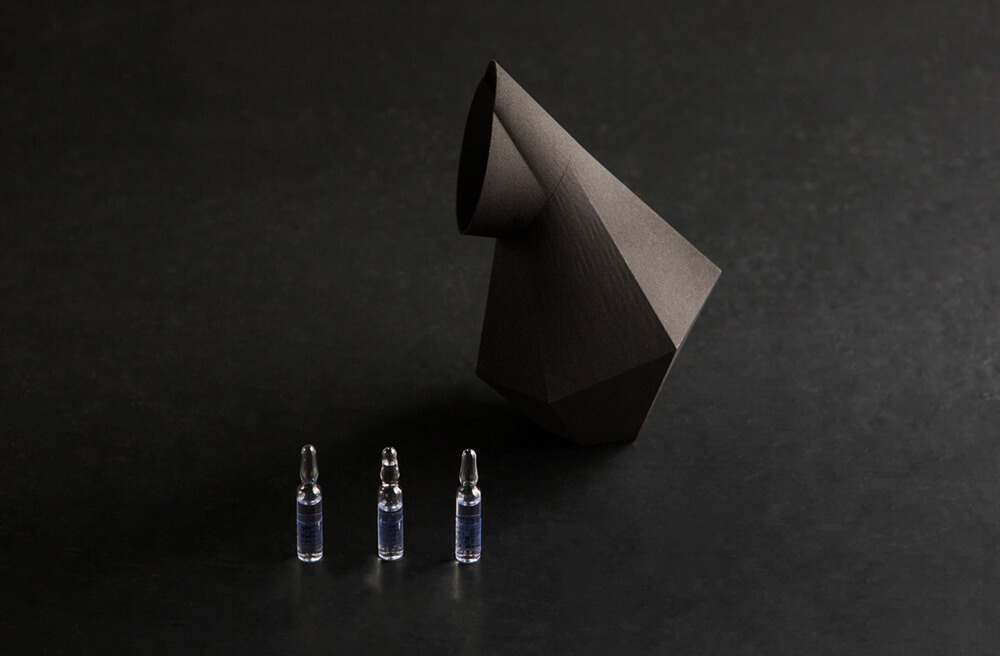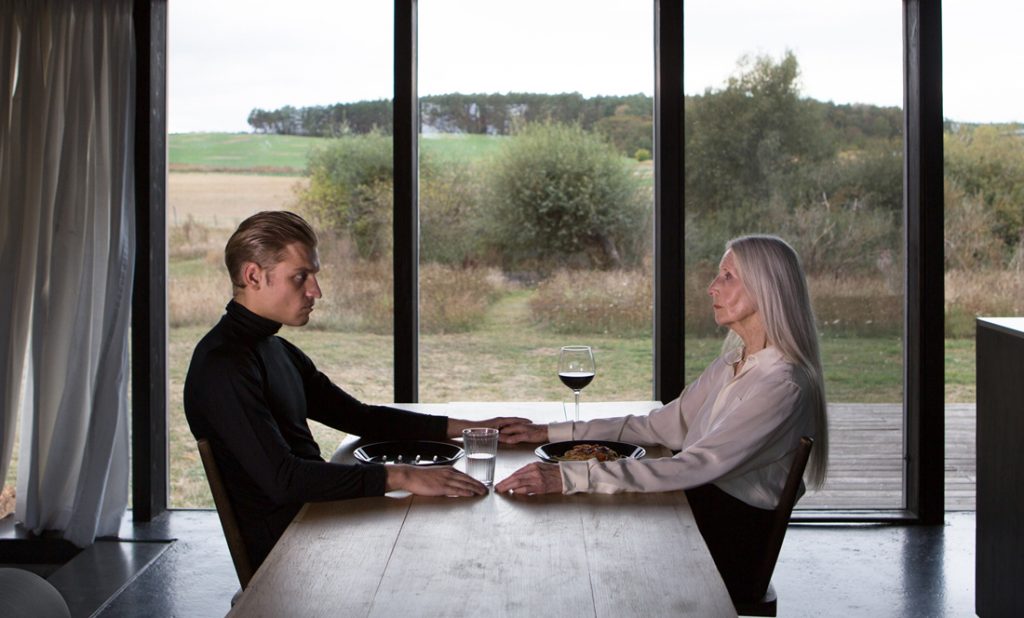Interview by Tony Cho

Emilia Tikka’s speculative take on the genetic manipulation of ageing takes us to a rustic future, where a couple
A futurist at heart, Emilia uses her understanding of synthetic biology in order to tell stories and challenge whether these stories must be kept being told into the future. And although these works may project speculative futures, they are inspired by the very real research that is ongoing in the scientific community. Tikka having recently worked at the Max-Delbrück-Center for Molecular Medicine and STATE Studio is not only interested in imagining a future but also exploring just how close our imaginations are to reality.
Tikka’s AEON project focuses on a specific scientific study that showed that skin cells in mice can be rejuvenated through the partial activation of Yamanaka factors, which are specific genes that exist within our DNA. This folding back of death becomes the heart of speculation as Tikka exposes the viewer to two futures- one that explores immortality through biological means and the other that accepts natural death and allows these two futures to play off each other. Tikka relies on strong and visceral imagery to capture these philosophical insights. Her visual style allows her images to differ from classic sci-fi tropes.
Even in her early works, such as External Body, one can see her attention toward visceral imagery as body forms are sculpted by architectural fabrics and monochromatic shadows. Focusing on the image as space for people to reflect and question, Tikka’s images have an evocative effect, allowing for people to stare and contemplate why they are standing before this image. Tikka’s storytelling style through images engages the audience to the artwork’s narration, allowing viewers to inject, inflect, and meander from the story to their own thoughts.
This storyteller placed inside a laboratory is evidence of the importance of art’s ability to deepen perspectives on science. New perspectives are needed in this time of great biotechnological revolution as scientists begin to approach the boundary of morals and ethics. In this backdrop, Emilia Tikka uses novel and contemporary technologies as a medium to re-examine philosophical and existential questions that have been suggested through centuries through various religions, philosophical pursuits, and art. If there is any way to make sense of the implications of a biotechnological revolution, let’s hope that more designers such as Tikka shed light on the philosophical reasonings behind such implications.

For those that are not familiar with your background, could you tell us how and when the interest in genetics and biotechnology come up?
My background is in design, but I`ve always worked on the conceptual and theoretical side of the field. As a designer and artist, my aim is to engage with contemporary technologies and phenomena which seem to shape our individual and collective futures most radically. Therefore, since I heard about gene-editing and understood how deeply the technology might impact not only the future of humans but of life itself, I knew that I`d have to engage with the topic. The field (gene-editing) needs more interdisciplinary approaches, such as speculative concepts and new storytelling methods, to be able to ask the right questions concerning the future.
ÆON Trajectories of Longevity – is a poetic philosophical-speculative scenario about a possible near-future world where the biological clock can be reversed by genetic reprogramming. What was the intellectual process behind the project?
My work, in general, is about challenging the dreams and wishes driving biotechnological innovations, especially synthetic biology and gene editing. The aim of my work is to establish new ways of storytelling to capture the hidden but powerful philosophical questions dealing with these novel technologies. Therefore, my starting point in ÆON was to try to understand what lies behind one of the oldest dreams of humanity, immortality, and how this desire is being implemented by biotech companies.
I wanted to dive deeper into the question, would some of us wish to stop ageing and/or live forever? How would society actually change if it would be an option? What would shape an individual’s decision to stop ageing? ÆON illustrates a couple who, in the past, as young adults, have made opposite choices to use the rejuvenating technology and now, 60 years later, have to face the consequences of this fundamental decision. The work is an emotional story of two individuals embodying opposite worldviews. The story indicates how the possibility of so-called eternal life challenges us to face our own fears about loss and the threshold of death. Finally, ÆON confronts us with our conception of what we think about death and afterlife.
What do you expect from the audience who interact with the piece that you presented at STATE Studio?
I don’t expect anything, but I hope it would challenge the viewer to think about their personal approach to the theme and also what kind of futures they would find desirable. The discourse of possible futures and novel technologies is often focusing on applications or technological points of view. But in my perspective, the most important questions when it comes to editing the human genome are existential and philosophical ones.
For the piece ÆON Trajectories of Longevity, you worked in close collaboration with scientists from Max Delbrück Center for Molecular Medicine. For your piece, you worked with one of the new tools used in Molecular Biology: Cas9 and CRISPR (although it was discovered in the 1980s now when is having quite an exposure in the media); What did you find the most fascinating about the scientific work the lab is developing?
The process leading towards developing the gene-editing technology CRISPR includes several discoveries and scientists involved around the globe. However, CRISPR, as it is today, as the most precise gene-editing technology in the history of science, low-priced and rather easy to use, was developed around 2013. The so-called CRISPR revolution has just started and therefore getting high media exposure.
As it enables scientists to edit genomes of all living entities, including humans, it is (one of) the most influential and controversial technologies at the moment. However, the field of genome editing technologies is being constantly developed, and therefore CRISPR might not be the end of the story. During my residency at MDC, I realized how the high complexity of the technology and the detailed scientific work is in strong contrast to the simplification and hype often introduced by popular media.
Where do you see taking your work into?
Conceptually I am interested to challenge the role of design and storytelling in the current “posthuman” discourse. I am aiming to merge design with humanities and natural sciences to develop new perspectives on the field of genome editing. Currently, I am conducting research as a Visiting Scholar at the Hermann von Helmholtz Centre for Cultural Techniques of the Humboldt-Universität
What is your chief enemy of creativity?
Lack of sleep, lack of (sun)light.
You couldn’t live without…
People close to me and my dog who is distracting me from working all the time.






